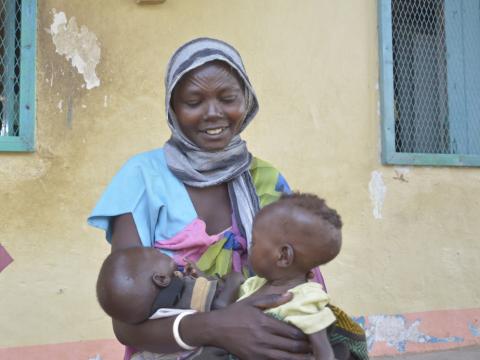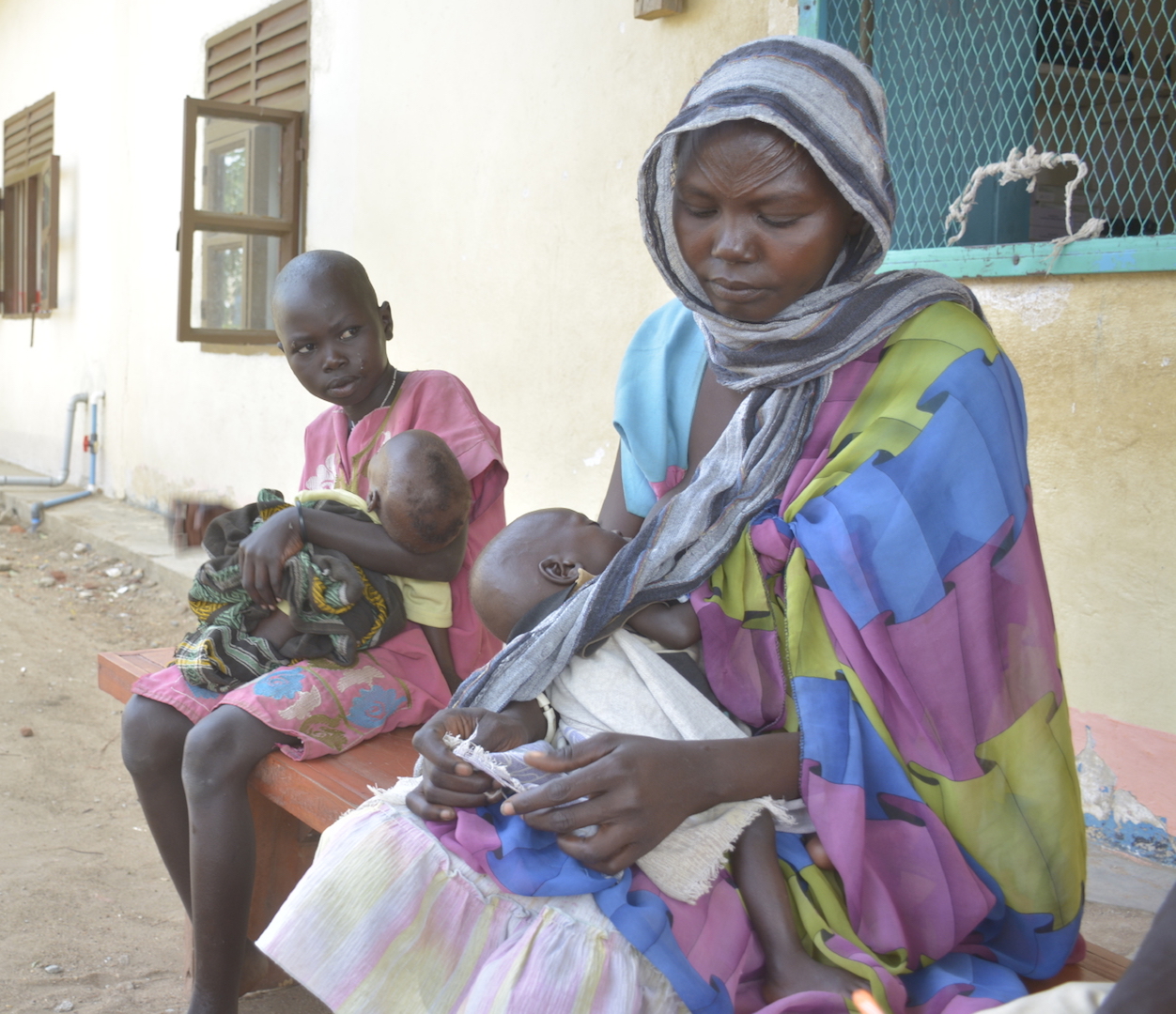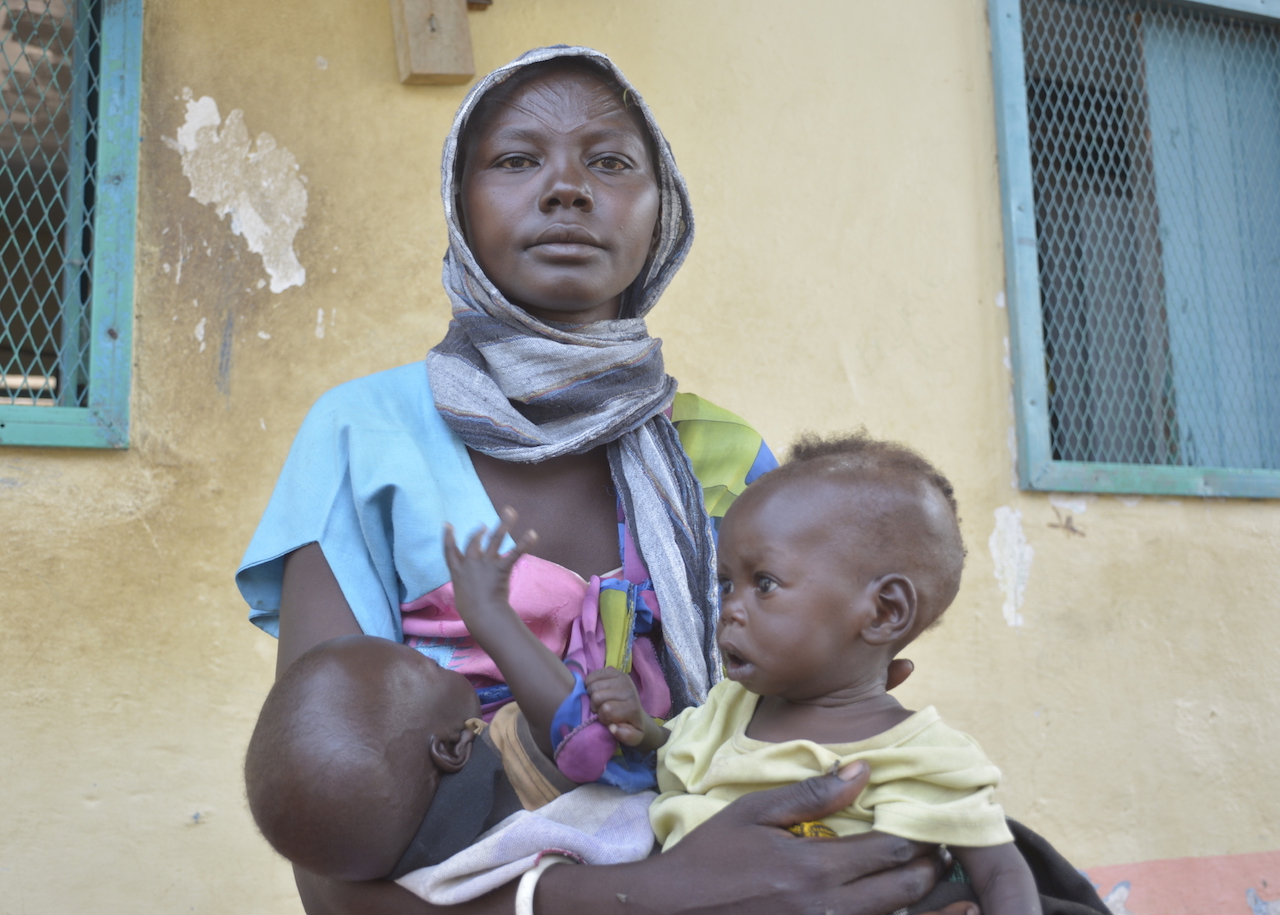Thousands of children face renewed adverse malnutrition in South Sudan

By Lisi Emmanuel Alex, Communications Officer, World Vision South Sudan
Every country around the globe has its own issues to worry about but for a fragile country like South Sudan, it is overwhelmed by unbearable conditions such as malnutrition, famine and poverty and insecurity, among other factors.
After the country was declared famine free in June 2017, there were still impending worries that the odds may return if the situation of the country continues to remain the same. Today children, pregnant and lactating mothers continue to suffer from the various form of malnutrition as the major cause of the healthy deterioration of many vulnerable.
Regina Gbate, a 30 year only mother of five children is a beneficiary of Gurei health center. She has six months twin babies Kulang Marco and Goyo Marco (a boy and a girl), both six months old. Unlike her previous twin baby girls, her babies are born at a time when many families are struggling each day to provide a single meal.
“My babies were very tired and had wrinkles all over their bodies,” said Regina who is in her third week of benefiting from World Vision’s run malnutrition treatment center.
“Now, they are improving but I fear they will return to the previous state once they are discharged because I cannot afford to provide enough nutritious food for them. Sometimes we sleep hungry for days,” she said.
At just their young age, the children have been admitted into programmes to improve their health for the second time. The first time they were referred by doctors from Al-shabah Children Hospital after spending a month suffering from severe malaria.
Regina is a farmer who lived on the local harvest in her village, but she was brought to Juba by her husband during the 2016 conflict. She was nurturing her first twin girls at the time she came to Juba.
“We were cultivating peanuts, sorghum and some vegetables and though the food wasn’t enough my family never has gone hungry like this,” she explained.
Since it was difficult for Regina to find any work in Juba, she decided to venture into quarrying stones. The business was risky because Regina had to carry big rocks and crush them using a hammer. Sometimes she piled vehicle tires around the rocks and burned the rubber so that the rocks were not too hard for her to crush.
She did this in order to get a little money to support her children because her husband can’t provide enough support for the family as he has another wife.
Regina later left the business because there was not much construction work in Juba since the beginning of the renewed conflicts in Juba that spread all over the country. Currently, she has some gravel that she quarried in 2017 but till now nobody has come to ask the price.
Regina said she would like to return to her village so that she could farm again but is afraid of the insecurity in her village.
Now, Regina is currently selling peanut paste in the streets of Juba so that she can have food for the children. Her business is hampered by the situation of the twins as she has to stay home taking care of the children.
In April alone, in eleven centers around, 115 children were screened positive of the malaria parasite, one of the common diseases that lead to malnutrition among children in South Sudan. World Vision admitted 257 children to OTP (Outpatient Therapeutic Program) because of Severe Acute Malnutrition, 457 children and 120 pregnant and lactating mothers to TSFP (Targeted Supplementary Feeding Program) because of Minimum Acute Malnutrition.
Gloria Joseph, World Vision Nutrition Coordinator says the increase in malnutrition is due to the bad economic condition where mothers feed once a day while other families have nothing completely but to only share from their neighbours.
She added that malaria and other infectious diseases contributed greatly to malnutrition because children lost much of their body immune when they fall sick.
“In March we admitted 204 children to OTP and 451 to TSFP meaning the situation is getting worse each month,” added Gloria.
“If the nutrition situation doesn’t improve, the prevalence of Global Acute Malnutrition (GAM) is likely to move from the current classification of 12.6% (serious) to 15% classified as critical by World Health Organization,” said Damaris Wanjiku, the Nutrition Project Manager
According to East Africa Hunger Crisis Situation Report for April 2018, World Vision identified limited access to nutrition and health services as dire within the Internally Displaced Person (IDPs) and the famine affected communities.
It also stated that 4.2 million children are in need of humanitarian assistance meaning its absence will lead to increase in the already worsening malnutrition conditions.
The report indicates that the total number of children receiving malnutrition treatment by April alone stood at 10,908 and 4,085 pregnant and lactating mothers’ countrywide.

